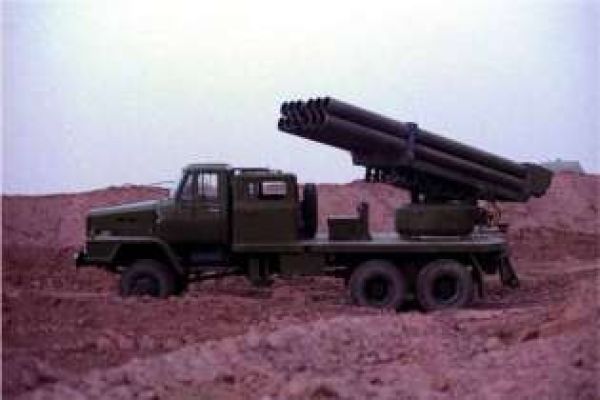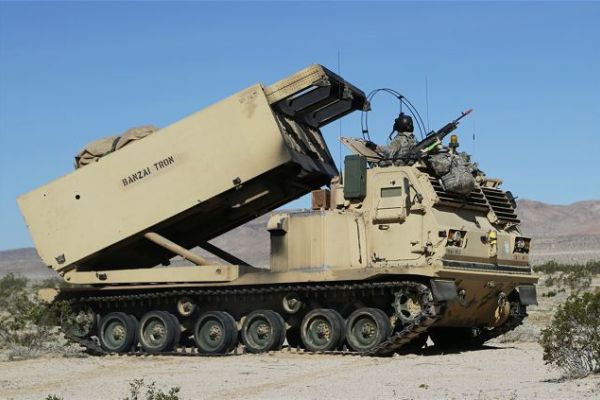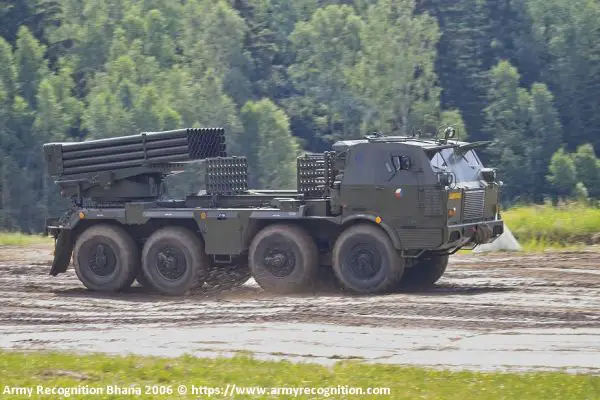Multiple Launch Rocket Systems.
M-1985 MLRS.

The M1985 240 mm multiple rocket launcher system (MRLS), developed by North Korea, represents a robust yet straightforward artillery system designed to deliver high-explosive saturation bombardment. It incorporates 12 unguided rocket launch tubes mounted on a Japanese Isuzu 6×6 truck chassis, optimized for mobility and rapid deployment. While it shares design principles with similar systems, such as Iran's Fadjr-3, the M1985 is uniquely tailored for North Korea's strategic needs.
Country users: Iran, North Korea
Description
The M1985 MRLS emerged in the 1980s as part of North Korea's efforts to modernize and diversify its artillery capabilities. Developed to complement conventional tube artillery, this platform offers enhanced operational reach, with a maximum firing range of 43 km. Its primary mission includes neutralizing strategic enemy assets such as command posts, logistics hubs, radar installations, airfields, and urban centers. Its design emphasizes high mobility, ease of operation, and rapid-fire capabilities, aligning with North Korea's emphasis on mobile and decentralized warfare tactics.
M-1985 MLRS variants:
- Fadjr-3: is a 240 mm multiple rocket launcher system developed by Iran's Defense Industries Organization, drawing inspiration from North Korea's M1985.
Technical Data
-
Armament
The M1985 MLRS is equipped with 12 launch tubes arranged in two banks of six mounted on the rear platform of a 6×6 truck chassis, each capable of firing 240 mm unguided, spin-stabilized rockets. These rockets are typically armed with high-explosive fragmentation (HE-FRAG) warheads weighing approximately 90 kg and containing around 45 kg of explosives. Alternative warhead types, such as smoke, incendiary, and chemical agents, are also believed to be available. The maximum effective range of the rockets is approximately 43 km, allowing the system to engage targets at significant distances. Each rocket carries a high-explosive fragmentation warhead weighing approximately 85 kg, which generates a lethal fragmentation radius of 300 m upon detonation. In addition to the standard high-explosive warheads, the system is believed to accommodate alternative payloads, including smoke, incendiary, and chemical agents, allowing it to adapt to various mission profiles. The rockets are launched in rapid succession, delivering concentrated firepower against strategic and tactical enemy targets, such as command centers, airfields, and logistical hubs. With a maximum speed of 930 meters per second and a motor burn time of four seconds, the rockets deliver swift and devastating effects on the battlefield.
-
Design and protection
The M1985 MLRS is built on a 6×6 military truck chassis, featuring a crew cab located at the front and a command control shelter positioned directly behind it. The rocket launcher system is mounted on the rear of the truck, occupying the flatbed section. Notably, the crew cab lacks any form of armor protection, making it vulnerable to enemy fire and requiring operational caution during deployment. The M1985 MLRS typically operates with a crew of four personnel. This includes a driver, a commander, and two operators responsible for preparing, aiming, and firing the rockets. The crew is tasked with deploying the stabilizing jacks, manually controlling the elevation and traverse of the launcher, and overseeing the reloading process, which is supported by a separate transloader vehicle equipped with a crane.
-
Mobility
The M-1985 MLRS is based on an Isuzu 6×6 truck chassis. Its rugged suspension system and powerful engine enable cross-country maneuvering, essential for the rapid repositioning required during modern artillery engagements. While detailed chassis specifications are undisclosed, its off-road performance is comparable to similar military trucks used globally.
-
Combat Equipment
The M-195 rocket launcher is manually operated, with adjustments to elevation and traverse achieved through simple mechanical controls. The absence of advanced fire-control systems reflects the platform's emphasis on simplicity and mass production. The system relies on a transloader vehicle equipped with a crane for reloading operations, which are performed away from the firing site to reduce exposure to counterfire.
Specifications
-
Armament
12 launcher tubes for 240mm rockets
-
Country users
Iran, North Korea
-
Designer Country
North Korea
-
Combat Equipment
Manual sight system, manual control for elevation and traverse
-
Crew
4
-
Armor
No armor.
-
Truck Weight
Estimated to be 14,000 to 15,000 kg
-
Truck Speed
70 to 80 km/h road speed
-
Range Rocket
43 km
-
Dimensions
Length: 8 to 9 m; Width: 2.5 to 3 m; Height: 3 to 3.5 m










































